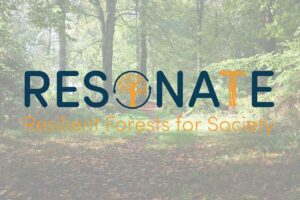Humans have long sought suitable models or representations to guide natural resource management, including forestry. These models represent the values of societies and the relationships of societies to nature. For example, the “close-to-nature” forestry movement in central Europe is an attempt to emulate nature with forestry or silvicultural treatments. This is not an uncommon approach, as humans have often attempted to emulate natural systems, or our perceptions of them, as a basis for management. Emulating nature has traditionally been seen as a way to achieve sustainability. But emulating nature is often the preference of societies that have no better models to guide natural resource management.
The central European close-to-nature movement often fails on three points
First, it frequently ignores the dynamism of nature and the important role of disturbance events in shaping natural forests. Modern ecology recognizes this dynamism and has largely discredited older ideas about ecological succession to a stable, and self-perpetuating climax state. In other words, the concept of a stable “balance of nature” is a human construct, not an ecological reality. Nature is dynamic, in every way!
Second, the movement is looking backwards rather than to the future. By emulating perceptions of past conditions, they fail to see the future. The expectation of a warming climate will likely correspond to greater stress on our forests and a greater frequency of severe disturbance events. Additional realities of our changing world make looking backward a futile approach: the forest ecosystems of the future will have more invasive pests and recreational demands, in addition to the complications of changing climate. Foresters need to prepare our forests to be resistant and resilient to these future conditions, not to conditions of a different climatic period of the past.
Third, the movement has confused a “silviculture-lite” model for naturalness. The “close-to-nature” treatments are often intentionally designed to be light and frequent, and single tree selection or a Plenter system is often the recommendation. Selection systems can be construed as a reaction to the heavy and infrequent effects of clearcutting. Whereas selection and clearcut systems are extremes at the opposite ends of a continuum of silvicultural treatment, merely taking one end of that continuum and assuming it is natural is wrong. Either end of the continuum of silvicultural treatment can be wrong, or right, as can the options in the middle. Likewise, naturalness can reside anywhere on this continuum. Being “light” or “lite” is merely a silvicultural option with its own set of effects and potential results.
If we try to imagine the most rudimentary attempts of early humans to practice agriculture or forestry, they were probably not concerned with being close to nature or even being sustainable. Instead, they were trying to survive, to carve an existence from their natural world. They were trying make nature yield additional dividends to improve their lives. They were practicing a strategy to make their ecosystems “better than nature.” Our present ecosystems also need us to manage them to be better than nature: to be resistant to the effects of climate change, to produce more goods and services, and to help offset the effects of a changing climate in sustainable ways. An improved strategy is to approach our role as stewards of our planet, and our forests, to be meet human needs in a changing world. Our management should strive to manage forests to be better than nature. Ultimately, isn’t this what natural resource management is meant to do?
References
OHara, K.L. (2014). Multiaged Silviculture: Managing for Complex Forest Stand Structures, Oxford University Press, Oxford, UK.
O’Hara, K.L. (2016). What is close-to-nature silviculture in a changing world? Forestry, 89(1), 1-6.
Disclaimer: The views and opinions expressed in this article are those of the author and do not necessarily reflect the views of the Institute of Chartered Foresters.






